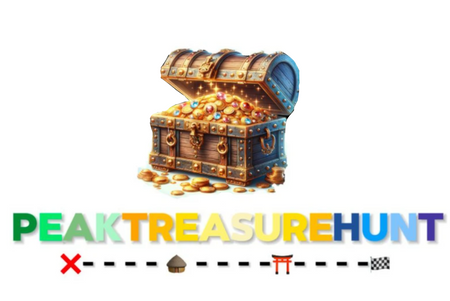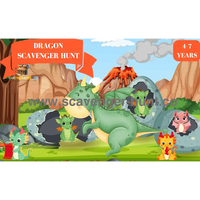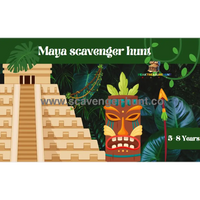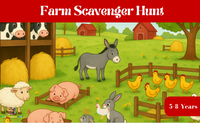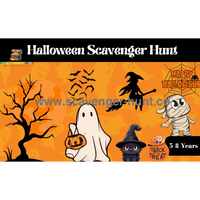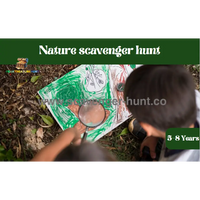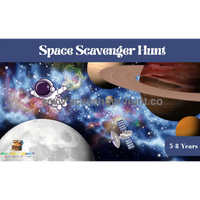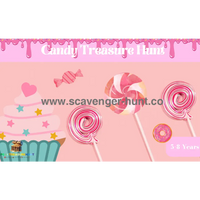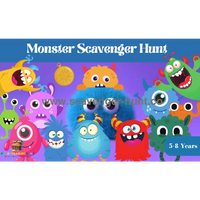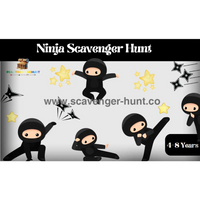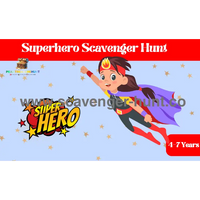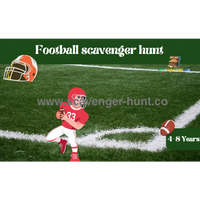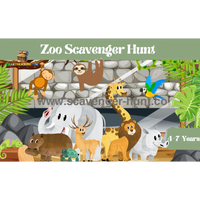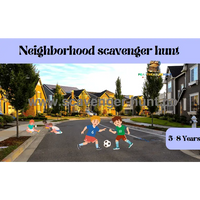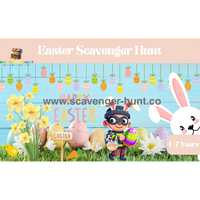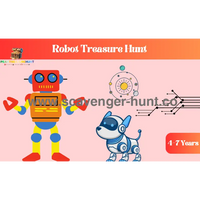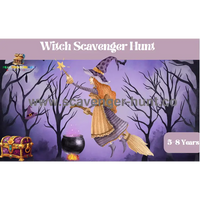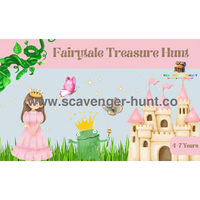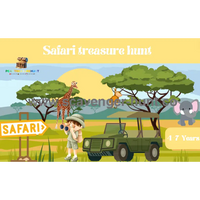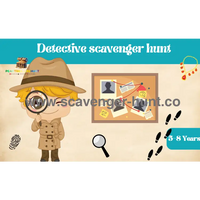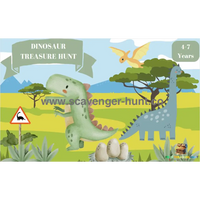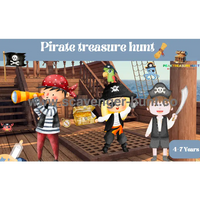🙌A Comprehensive Guide to Creating Unforgettable Adventures
Embarking on a scavenger hunt is akin to diving into a world of mystery and excitement, especially for children aged between 4 and 12. This interactive adventure not only captivates their imagination but also sharpens their problem-solving skills. As we navigate through the enchanting journey of assembling scavenger hunt clues, we aim to provide parents, particularly those residing in Germany, with a treasure trove of ideas to create an experience that their children will cherish. This article will serve as your map, guiding you through the process of crafting clues that are both engaging and age-appropriate, ensuring a memorable quest.

The Art of Crafting Clues
Creating Engaging Scavenger Hunt Clues for Kids
Creating scavenger hunt clues for kids requires a delicate balance of challenge and fun. Begin by considering the age and interests of the participants:
- For younger children (4-6 years), use rhymes and simple puzzles.
- Middle-aged children (7-9 years) enjoy riddles and maps.
- Older kids (10-12 years) are thrilled by cryptic clues and secret codes.
Incorporate themes relevant to their interests, such as pirates, space exploration, or fairy tales, to make the adventure more engaging.
The Art of Crafting Clues: Creating Engaging Scavenger Hunt Clues for Kids
Creating scavenger hunt clues for kids is an art that combines creativity, education, and fun. It involves designing clues that are not only age-appropriate but also stimulating enough to keep the children engaged and excited throughout the hunt. To achieve this, it's essential to tailor the clues to the participants' developmental stages and interests. Here's how to approach it for different age groups:
For Younger Children (Ages 4-6)
-
Rhymes and Simple Puzzles: Young children are drawn to the sounds and rhythms of language. Crafting clues that rhyme or have a musical rhythm can make the scavenger hunt more appealing. Simple puzzles that involve matching shapes or colors can also be intriguing for this age group.
-
Visual Aids: Incorporate colorful pictures or icons as part of the clues. For instance, a picture of a teddy bear could lead them to the next clue hidden in the playroom where the teddy bears are kept.
-
Interactive Clues: Clues that require them to perform a simple action, like clapping their hands or hopping on one foot, can add a physical element to the hunt, making it more dynamic and engaging.
For Middle-aged Children (Ages 7-9)
-
Riddles and Maps: Children in this age group enjoy solving problems and deciphering codes. Riddles that lead to the next location or item can be particularly exciting. Introducing maps, whether of their home, neighborhood, or a fictional place, adds an element of exploration and adventure.
-
Themed Adventures: Create a narrative around the scavenger hunt, such as finding the lost treasure of a pirate or searching for magical ingredients for a wizard's potion. This age group appreciates a story they can become part of.
-
Use of Technology: Incorporate simple technology, like QR codes that they can scan with a tablet or smartphone, to reveal the next clue. This adds a modern twist to the scavenger hunt and makes it more relatable.
For Older Kids (Ages 10-12)
-
Cryptic Clues and Secret Codes: At this age, kids are ready for more complex challenges. Cryptic clues that require a bit of thinking or knowledge in a particular area, such as math or history, can be very engaging. Using secret codes or ciphers to hide the location of the next clue adds an element of mystery.
-
Incorporate Real-world Skills: Clues that require them to use real-world skills, like reading a compass, estimating distances, or even basic cooking skills, can be both educational and fun.
-
Tech-savvy Hunts: Older kids are generally more tech-savvy, so incorporating technology more deeply into the scavenger hunt can be very appealing. This could involve using GPS coordinates to find a location or creating an app that leads them through the hunt.
Universal Tips for All Ages
-
Keep It Safe: Ensure that all the locations and clues are in safe areas where children can explore without coming into harm's way.
-
Make It Inclusive: Design the scavenger hunt in a way that every child can participate, regardless of their physical abilities or learning styles.
-
Reward Everyone: While the thrill of the hunt is often reward enough, having small prizes or tokens for all participants can make the experience more memorable.
-
Involve Them in the Creation: If possible, involve the children in creating some of the clues or deciding on the theme. This can increase their excitement and investment in the game.
Creating scavenger hunt clues for kids is not just about keeping them occupied; it's an opportunity to stimulate their imagination, encourage physical activity, and even sneak in some learning. By tailoring the clues to their age and interests, you can ensure an engaging and unforgettable adventure.
Discover our Complete Scavenger Hunts Collection.


Location, Location, Location
Choosing the Perfect Setting for Your Scavenger Hunt
The setting of your scavenger hunt plays a crucial role in its success. Whether it's a home, a garden, or a local park, ensure the environment is safe and suitable for the age group. For families in Germany, consider utilizing local landmarks or cultural sites to add an educational twist. Remember, the location should add to the challenge but not to the point of frustration.
Location, Location, Location: Choosing the Perfect Setting for Your Scavenger Hunt
Selecting the ideal location for your scavenger hunt is pivotal to crafting an experience that is both enjoyable and memorable. The setting not only serves as the backdrop for your adventure but also influences the complexity and type of clues you can use. When planning a scavenger hunt for children in Germany, the choice of location should cater to the safety, interests, and the physical abilities of the participants. Here's how to select the perfect setting:
Home Sweet Home
-
Advantages: The home environment offers a controlled, safe space for younger children. You can easily monitor the participants and adjust the difficulty of the hunt on the fly. It's ideal for personalized themes, like birthday parties or rainy days.
-
Tips: Utilize various rooms and hidden nooks. Clues can be placed under pillows, inside bookshelves, or even tucked away in the refrigerator. The familiarity of the home can be leveraged to create clever hiding spots.
The Great Outdoors: Gardens and Parks
-
Advantages: Outdoor settings provide a larger area to explore and can incorporate nature into the hunt. Parks and gardens are excellent for encouraging physical activity and can accommodate larger groups.
-
Tips: Use natural landmarks as part of your clues. A clue could lead to the tallest tree in the park or a hidden bench by a pond. Ensure the area is safe and enclosed, especially for younger participants.
Cultural and Historical Sites
-
Advantages: Germany is rich in cultural and historical sites, which can add an educational element to your scavenger hunt. Exploring a castle, museum, or historical neighborhood can make the scavenger hunt an enriching experience.
-
Tips: Coordinate with site management if necessary, to ensure that the hunt is allowed and does not interfere with the operations of the site. Clues can be based on historical facts or artifacts, making the hunt a learning experience.
Local Landmarks and Neighborhoods
-
Advantages: Using local landmarks and neighborhoods allows participants to explore their community and perhaps discover new places. It can also instill a sense of local pride and knowledge.
-
Tips: Ensure the route is safe and consider the accessibility of each location. Clues can involve finding specific sculptures, visiting local businesses, or identifying historical plaques.
Safety and Accessibility
Regardless of the location, safety should be your top priority. Ensure the area is suitable for children to roam, with hazards clearly marked or avoided entirely. Accessibility is also crucial; ensure that all participants, regardless of physical ability, can enjoy the scavenger hunt.
Adjusting to the Challenge Level
The setting you choose should complement the age group and challenge level of your scavenger hunt. For younger children, a more contained and familiar environment might be best, while older kids and teenagers might appreciate the challenge of a larger, more complex setting. Always consider the physical layout of the location and how it can enhance the scavenger hunt experience without causing frustration or exhaustion.
Conclusion
The perfect setting for your scavenger hunt can transform a simple game into an unforgettable adventure. By considering the safety, interests, and abilities of your participants, as well as the unique opportunities offered by local German landscapes and landmarks, you can create a scavenger hunt that is both fun and educational. Remember, the best location is one that challenges the participants just enough to keep them engaged, but not so much that it becomes a chore. With the right setting, your scavenger hunt can be a highlight of their childhood.
Discover our Complete Scavenger Hunts Collection.


The Element of Surprise
Keeping Kids on Their Toes with Creative Clues
To keep the scavenger hunt exciting, vary the types of clues throughout the adventure. Mix physical challenges with mental puzzles to cater to different strengths and interests. For example, a clue leading to the next location could be hidden in a jigsaw puzzle, or it might require solving a math problem. Incorporating tasks that encourage teamwork can also enhance the social aspect of the game.
The Element of Surprise: Keeping Kids on Their Toes with Creative Clues
The key to an unforgettable scavenger hunt lies in its ability to surprise and delight its participants at every turn. For children, the thrill of discovery and the joy of solving puzzles are magnified by the unexpected. By incorporating a variety of clue types and challenges, you can cater to diverse interests and keep the excitement levels high throughout the adventure. Here’s how to inject creativity into your clues and ensure that your scavenger hunt remains engaging from start to finish.
Mix and Match Clue Types
-
Physical Challenges: These can be simple tasks that require participants to complete a physical action to reveal their next clue. For instance, they might need to score a goal with a soccer ball, complete a simple obstacle course, or even perform a dance move. This not only adds variety but also helps to burn off some of their boundless energy.
-
Mental Puzzles: Balance the physical activities with mental challenges. Puzzles, riddles, math problems, or word games can be tailored to suit the age group of the participants. For younger children, picture puzzles or simple riddles work best, while older kids might appreciate the challenge of a more complex math problem or a cryptogram.
Incorporate Teamwork Tasks
-
Collaborative Challenges: Design certain clues that require teamwork to solve. This could involve assembling a puzzle together to reveal the next location or cooperating in a three-legged race to reach the next clue. Tasks that encourage collaboration not only make the hunt more enjoyable but also teach valuable social skills.
Use Technology to Enhance the Experience
-
Digital Clues: In an age where technology is second nature to most kids, incorporating digital elements can make your scavenger hunt more relatable and exciting. Use QR codes that kids can scan with a smartphone or tablet to reveal a clue, or create simple videos that offer hints. Just ensure that the use of technology is supervised and appropriate for the age group.
Create Interactive Environments
-
Environmental Interaction: Use the setting of your scavenger hunt to create interactive clues. For example, a clue hidden inside a sandbox requires kids to dig, or a message written in invisible ink that only appears under the sunlight. These types of clues encourage children to interact with their environment in novel ways, enhancing the overall experience.
The Surprise Element
-
Unexpected Twists: Keep participants guessing by introducing unexpected twists. Midway through the hunt, you could introduce a surprise element, such as a new team member (a stuffed animal or a character from a story) that they need to "rescue" or accompany for the rest of the adventure. Such surprises keep the energy high and ensure that the children remain engaged.
Celebrate Creativity and Effort
-
Rewards for Creativity: While the hunt itself is rewarding, acknowledging the creativity and effort of the participants can add an extra layer of satisfaction. Offer small prizes or certificates for the most creative solution to a clue, the best teamwork, or even just for participation.
Conclusion
By varying the types of clues and incorporating elements of surprise, your scavenger hunt can become an exhilarating adventure that children will remember for years to come. Mixing physical and mental challenges caters to different strengths, while teamwork tasks and interactive environments enhance the social and exploratory aspects of the game. The goal is to keep the kids on their toes, constantly wondering what’s coming next. With a little creativity and planning, your scavenger hunt will be the highlight of their childhood adventures.
Discover our Complete Scavenger Hunts Collection.


Rewards and Motivation
Selecting Appropriate Rewards for Scavenger Hunt Achievements
The promise of a reward can significantly motivate children during a scavenger hunt. Rewards do not always have to be material; they can be experiences, like a picnic at the end of the hunt or a storytime session. For a personalized touch, consider rewards that resonate with the children's hobbies or interests. This approach not only celebrates their achievements but also encourages continued participation.
Rewards and Motivation: Selecting Appropriate Rewards for Scavenger Hunt Achievements
The anticipation of discovering a reward can be a powerful motivator for children engaged in a scavenger hunt. The right reward can light up their faces, spur their enthusiasm, and make the adventure memorable. However, selecting the most suitable rewards requires thoughtfulness to ensure they resonate with the children's ages, interests, and the effort they've put into the game. Here's how to approach rewarding their achievements in a way that enriches the experience.
Experience-Based Rewards
-
Group Activities: Concluding the scavenger hunt with a group activity, such as a picnic in the park, a pizza party, or a movie night, offers dual benefits. It not only serves as a reward but also fosters a sense of community and shared achievement among the participants.
-
Educational Experiences: Rewards that double as learning opportunities can be particularly enriching. A visit to a zoo, aquarium, or museum after completing the hunt can extend the adventure's joy while feeding the children's curiosity about the world.
Personalized Rewards
-
Hobbies and Interests: Tailoring rewards to align with the children's hobbies or interests adds a personalized touch that can be more meaningful than generic prizes. For instance, art supplies for a budding artist, a new book for an avid reader, or gardening tools for a nature enthusiast can be incredibly motivating.
-
Achievement Certificates: Customized certificates of achievement for each participant not only recognize their effort but also serve as a keepsake of the experience. These can highlight specific contributions, such as 'Best Team Player,' 'Most Enthusiastic Explorer,' or 'Top Puzzle Solver.'
Material Rewards
-
Small Tokens: Material rewards need not be expensive to be effective. Small tokens, such as stickers, badges, or simple toys, can be delightful for younger children. The key is to choose items that are age-appropriate and, if possible, tie back to the theme of the scavenger hunt.
-
DIY Crafts: Encouraging children to create their own reward as part of the scavenger hunt, like a craft or a simple piece of art, can be incredibly rewarding. This not only provides a tangible reward for their efforts but also encourages creativity and provides a memorable takeaway from the day's activities.
Encouraging Continued Participation
-
Progressive Rewards: For scavenger hunts that occur regularly or as part of a series, consider implementing a system where rewards accumulate or lead up to a larger reward. This can encourage ongoing participation and engagement over time.
-
Recognition: Sometimes, the most powerful reward is recognition of their efforts. Acknowledging each child's contribution to the scavenger hunt in front of their peers can be a significant motivational boost.
Safety and Inclusivity
When selecting rewards, it's crucial to consider the safety and inclusivity of all participants. Ensure that any material rewards are safe for the age group and do not pose choking hazards for younger children. For group rewards, choose activities and experiences that are accessible to all participants, regardless of their physical abilities or interests.
Conclusion
Rewards and motivation are integral to the success of a scavenger hunt, adding an extra layer of excitement and satisfaction to the adventure. By carefully selecting rewards that are meaningful, age-appropriate, and aligned with the participants' interests, you can enhance the overall experience. Whether through material gifts, experiences, or recognition, the right rewards can celebrate achievements, encourage continued participation, and leave children with fond memories of their scavenger hunt adventure.
Discover our Complete Scavenger Hunts Collection.


Safety First
Ensuring a Safe and Enjoyable Scavenger Hunt for Children
Safety is paramount when organizing a scavenger hunt for kids. Ensure all locations are checked for potential hazards and that younger children are supervised. Additionally, keep the hunt within a confined, safe area and provide clear instructions to prevent any confusion. Preparing for unexpected weather conditions, especially in Germany's varied climate, is also essential to ensure that the fun continues come rain or shine.
Safety First: Ensuring a Safe and Enjoyable Scavenger Hunt for Children
When planning a scavenger hunt, the safety of the participants is of utmost importance. A well-organized event considers all potential risks and takes measures to prevent accidents or injuries. This not only guarantees the well-being of the children but also ensures that the scavenger hunt remains a fun and stress-free activity for everyone involved. Here are essential safety guidelines to follow, especially when organizing such activities for children in Germany's diverse environments.
Pre-Event Planning and Location Checks
-
Inspect Locations: Before the event, personally visit all intended locations of the scavenger hunt to check for potential hazards. These can include broken glass, uneven surfaces, or areas near water. Ensure the chosen locations are age-appropriate and secure.
-
Weather Considerations: Germany's weather can be unpredictable, with sudden showers or temperature drops. Monitor the weather forecast leading up to the event and plan accordingly. Consider indoor alternatives or ensure there are sheltered areas available along the route.
-
Supervision: Especially for younger children, adequate adult supervision is crucial. Ensure there are enough adults present to keep an eye on all participants. It might be helpful to have a ratio guideline, such as one adult for every four to five children, depending on their ages.
Clear Rules and Instructions
-
Safety Briefing: Before starting the scavenger hunt, hold a brief meeting with all participants to go over the rules, emphasizing the importance of staying within designated areas and not wandering off alone.
-
Emergency Procedures: Make sure children know what to do if they become lost or separated from the group. Establish a clear meeting point and provide each child with a contact card containing the phone numbers of the organizers.
-
Equipment Check: If the scavenger hunt requires any equipment, such as flashlights for an evening hunt or compasses for navigation, ensure everything is in safe working order. Also, provide safety gear as necessary, like reflective vests for visibility if the hunt extends into the dusk hours.
During the Event
-
Constant Communication: Utilize walkie-talkies, mobile phones, or other communication devices to keep in touch with other supervisors or volunteers. This allows for quick coordination in case a child needs assistance or there is a change in plans.
-
First-Aid Preparedness: Always have a first-aid kit on hand, and ensure at least one person present is trained in basic first aid and CPR. This is crucial for addressing minor injuries quickly or stabilizing a situation until professional medical help arrives.
-
Hydration and Comfort: Keep plenty of water available, especially for outdoor hunts during warmer weather, and encourage regular breaks. Also, consider the length of the hunt to ensure it is appropriate for the age group and that children do not become overly tired or frustrated.
Post-Event
-
Debrief: After the event, gather feedback about the scavenger hunt, including any safety concerns that arose. This will help you improve future events and ensure they are even safer and more enjoyable for children.
-
Lost Items Check: Make sure all children leave with the belongings they came with. Setting up a lost and found collection point can help reunite lost items with their owners.
Ensuring a safe environment for a scavenger hunt requires thorough planning, vigilant supervision, and a proactive approach to potential risks. By adhering to these safety guidelines, organizers can provide a secure setting where children can explore, learn, and have fun without the worry of accidents or injuries. Remember, a successful scavenger hunt is one where every participant returns home safe, happy, and eager for the next adventure.
Discover our Complete Scavenger Hunts Collection.


Frequently Asked Questions
1. How do I create scavenger hunt clues that are age-appropriate for my child?
- For younger children, focus on simple, rhyming clues or picture clues. For older children, incorporate more complex riddles, puzzles, or codes that challenge their thinking.
2. Can scavenger hunts be educational?
- Absolutely! Incorporate clues that require solving math problems, identifying historical landmarks, or learning about nature to add an educational layer to the fun.
3. What are some creative scavenger hunt rewards for kids?
- Beyond traditional toys or sweets, consider experiential rewards like a camping trip in the living room, a family movie night, or a creative arts and crafts session.
4. How can I ensure the safety of children during a scavenger hunt?
- Choose safe, enclosed locations, supervise younger children closely, and prepare for all weather conditions. Providing children with a whistle or a small flashlight can also enhance safety.
5. How can I make a scavenger hunt exciting for kids who have different interests?
- Include a variety of clue types that cater to different skills, such as physical activities, puzzles, and creative tasks. This diversity ensures that every child finds something to enjoy.
Conclusion
Scavenger hunts are a magical way to engage children's minds and bodies in a thrilling adventure that they'll remember for years to come. By following the guidelines provided, parents in Germany can create customized hunts that are safe, educational, and immensely fun.
Crafting Unforgettable Adventures
Scavenger hunts possess a unique charm, offering children an immersive experience that combines the joy of discovery with the thrill of adventure. These engaging activities not only encourage kids to think creatively and solve problems but also promote physical activity and teamwork. By carefully considering the advice outlined in the previous chapters, parents and organizers in Germany can design scavenger hunts that are tailored to the interests and abilities of their young adventurers, ensuring an experience that is both safe and exhilarating.
Creating a scavenger hunt that captivates the imagination of children requires a blend of creativity, planning, and attention to detail. From crafting intriguing clues that challenge their minds to selecting a location that enhances the sense of adventure, each element plays a crucial role in the overall experience. Incorporating educational elements and utilizing local landmarks or cultural sites can also add a valuable layer of learning, making the hunt not just fun but also a source of knowledge and discovery.
Safety, as emphasized, remains the paramount concern. Ensuring that every aspect of the hunt is designed with the well-being of the participants in mind allows parents and guardians to relax and enjoy the event alongside the children. By preparing for unexpected challenges, whether related to weather, location, or participant needs, organizers can ensure that the scavenger hunt remains a positive and memorable experience for all involved.
Moreover, the inclusion of rewards and recognition further enhances the experience, providing children with a sense of accomplishment and pride in their achievements. These rewards, whether they are material gifts, experiences, or simply the recognition of their efforts, serve as a tangible reminder of the adventure and the fun they had.
In conclusion, scavenger hunts offer a wonderful opportunity for children to explore, learn, and grow. They are adventures that can spark curiosity, foster friendships, and create lasting memories. By following the guidelines provided, parents in Germany can create customized scavenger hunts that are not only safe and educational but also immensely fun. These hunts can become cherished experiences that children will remember fondly for years to come, eagerly anticipating their next great adventure.
Discover our Complete Scavenger Hunts Collection.


